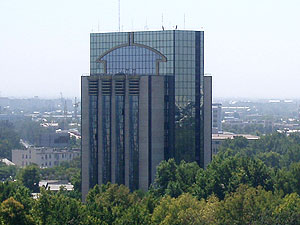In Q1 of 2022 the Central Bank increased the volume of foreign exchange interventions by 19% compared to the same period last year, the Bank said in a report.
In three months, the interventions stood at US$ 2.4 billion (or 26.8 trillion soums). The interventions were reportedly aimed at mitigating the sharp fluctuations in the exchange rate of the national currency, observed in March due to external risks.
According to the Central Bank, the total volume of deposit transactions reached 12.5 trillion soums. This is due to the increased demand for foreign currency, for the purchase of which banks needed UZS liquidity.
The money market in March was influenced by the reduction of liquidity in soums, caused by the increase in devaluation expectations of the business and the subsequent increased demand for foreign currency. This situation coincided with the seasonal reduction in overall liquidity in the banking system in January-February.
From February 24 to March 18, the soum fell against the dollar by 6.7% - from 10,840.28 to a record 11,571.99 soums. The loss was more than in the whole of 2021, when the national currency lost a total of 3.4%.
After raising the interest rate of the Central Bank to 17%, the soum began to strengthen against the dollar and added 1.5%, or 176.97 soums, reaching 11,395.02 soums on April 1. On April 7, the dollar exchange rate was set at 11,370.5 soums.
Central Bank Chairman Mamarizo Nurmuratov previously admitted that in order to prevent sharp fluctuations in the exchange rate, ensure the stable operation of the stock market and reduce devaluation expectations, the regulator increased the volume of interventions in the domestic foreign exchange market in the first half of March as part of the “principle of neutrality”. These interventions are being carried out at the expense of additional reserves accumulated last year as a result of favorable conditions in the foreign exchange market.













